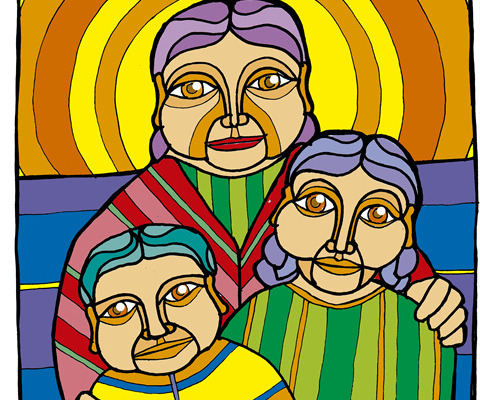Digital creative learning and people with social barriers
Digital creative learning can play an important role on the road to ensuring social inclusion. In itself, social inclusion helps to improve participation for all in society through enhancing equal access to resources and services. Inclusion requires the distribution of opportunities and resources in a way that minimises disadvantages and marginalization. It means that learning opportunities (including creative digital tools) should be designed to welcome the diversity of life’s situations and identities and be a platform for open sharing and exchange without prejudice or stereotyping.
Lesson 1: What does a „person with social barriers” mean?
The term "person with social barriers” is an example of inclusive language that refers to the term „disadvantaged” or „marginalized”. It is a generic term for individuals or groups of people who are underprivileged in one or more aspects. In some cases, they face special problems such as physical or mental disability, in other cases they lack economic support or resources. A person who faces social barriers may experience a higher risk of poverty, social exclusion, discrimination and violence than the average population. This includes ethnic minorities, people with disabilities, isolated elderly people, migrants and children or youth with fewer opportunities and access. Not to forget indigenous people, racialized groups, LBGTQ+ people, at-risk youth, the working poor, the long-term unemployed and others. What is common, is that are more prone to experiencing discrimination or barriers to equal opportunity.
As CULPEER digital addresses pedagogues and multipliers, this project is ultimately going to provide opportunities for people with social barriers, through creative digital tools that are accessible. In addition to what is presented in this Module, more information on accessibility and inclusion may be found in Module 7.
Lesson 2: Digital context
Digitalisation and the increased importance of digital technology, mass communication and online spaces and communities, all help provide access to the young people, no matter their social status. However, we need to be aware that the rapid growth of internet access, connectivity and reliance on technology has also determined a new landscape for inequality and discrimination. That’s why it is important to 1) avoid stereotypes about different social groups during the learning process and 2) assure the equal access to the provided digital tools to everybody. The first aspect is under the personal influence the pedagogues and teachers. However, the second one is very much out of our control and depends on policies and infrastructures. According to the National Digital inclusion alliance, “ digital inclusion requires intentional strategies and investments to reduce and eliminate historical, institutional and structural barriers to access to and use of technology by everybody”.
Lesson 3: How to include different cultural groups in an inclusive way
Digital creative learning focusing on „peer to peer” approach assure that pedagogues and multipliers can use the intellectual or artistic inputs from young people from different social groups. It means that they can speak for themselves. TIPS:
- let the young people speak their language (use tools that present the creative work captured by young people and their voice)
- show the examples presented by all social groups without naming the social groups
- use inclusive language
- follow the Dóchas Code of Conduct on Images and Messages
- ensure critical thinking with your target groups

